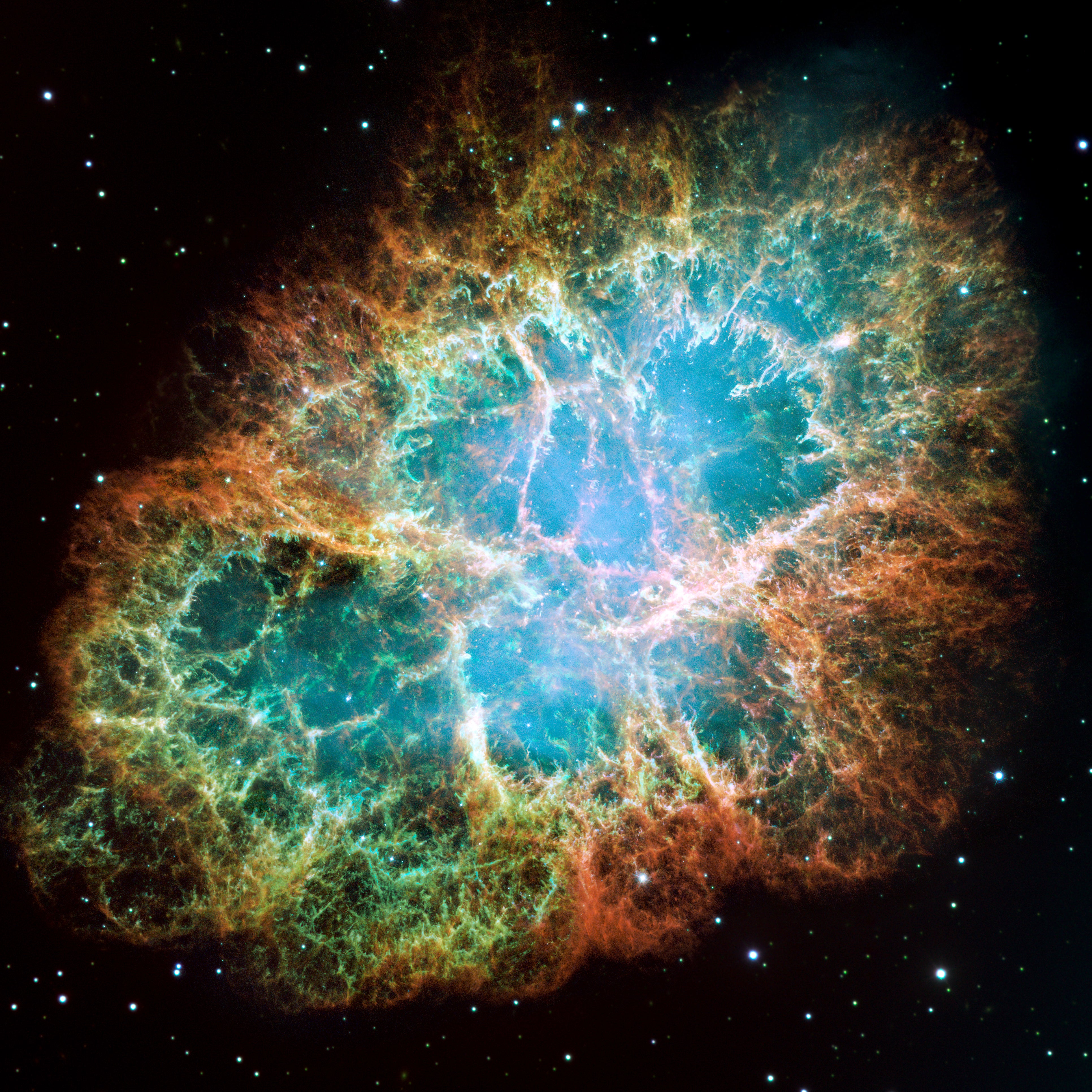When dying stars explode as supernovae, they usually eject a chaotic web of dust and gas. But a new image of a supernova’s remains looks completely different — as though its central star sparked a cosmic fireworks display. It is the most unusual remnant that researchers have ever found, and could point to a rare type of supernova that astronomers have long struggled to explain.
“I have worked on supernova remnants for 30 years, and I’ve never seen anything like this,” says Robert Fesen, an astronomer at Dartmouth College in Hanover, New Hampshire, who imaged the remnant late last year. He reported his findings at a meeting of the American Astronomical Society on 12 January and posted them in a not-yet-peer-reviewed paper on the same day.
An 850-year-old firework
In 2013, amateur astronomer Dana Patchick discovered the object in archived images from NASA’s Wide-field Infrared Survey Explorer. Over the next decade, several teams studied the remnant, known as Pa 30, but the results became only more and more baffling.
Vasilii Gvaramadze, an astronomer at Lomonosov Moscow State University in Russia, and his colleagues found an extremely unusual star in 2019 at the dead center of Pa 30. That star had a surface temperature of roughly 200,000 kelvin, with a stellar wind travelling outward at 16,000 kilometres per second — roughly 5% of the speed of light. “Stars simply don’t have 16,000-kilometre-per-second winds,” Fesen says. Speeds of 4,000 kilometres per second aren’t unheard of, he says — but 16,000 is wild.
Pa 30 was again the subject of intrigue in 2021, when Andreas Ritter, an astronomer at the University of Hong Kong, and his colleagues proposed that the remnant is the aftermath of a supernova that lit up the sky nearly 850 years ago, in 1181. Chinese and Japanese astronomers observed the object for roughly six months before it faded.
During their examination of Pa 30, Ritter and his colleagues noted that the remnant’s emission spectrum contained a particular line associated with the element sulfur. Intrigued, Fesen’s group later imaged the remnant with an optical filter that is sensitive to that line using the 2.4-metre Hiltner Telescope at the Michigan–Dartmouth–MIT Observatory at Kitt Peak, Arizona.

The data they collected not only helped to confirm that Pa 30 is indeed what’s left of the supernova observed in 1181, but also yielded an image of the remnant unlike any other. It contains hundreds of fine filaments radiating outwards. Normally, researchers expect supernova remnants to look like the Crab Nebula — which looks less like a crab and more like a sea anemone, with a smooth region at the centre of an oval-shaped mass of tentacle-like filaments. They also commonly look like the Tycho Supernova, which looks like a sphere of jumbled knots.
But Pa 30 comparatively makes for “just an amazing image”, says Saurabh Jha, an astronomer at Rutgers University in Piscataway, New Jersey. “I’ve never seen anything like it before. It’s really mind-blowing.”
Cheating death
What could have caused such a remnant? In 2021, Ritter and his colleagues speculated that it was a rare supernova explosion classified as type Iax.
A normal type-Ia supernova occurs when a white dwarf siphons material from a companion star, eventually growing so massive that it can no longer support the extra weight and blows itself to smithereens — dispersing its innards across the galaxy. But in a type-Iax supernova, the star somehow survives. “We often call these zombie stars,” Jha says.
Although theorists have developed many possible mechanisms to explain type-Iax supernovae, Ritter and his colleagues think that two white dwarfs slammed together to produce Pa 30’s fireworks. That’s clear from the amount of sulfur in the remnant, which is a byproduct of a white-dwarf explosion, and the lack of lighter elements that you would see from more massive stars.
Anthony Piro, an astronomer at Carnegie Observatories in Pasadena, California, thinks these findings crystallize at least one path through which a type Iax can form. But it is different from the previously favoured scenario, in which a white dwarf siphons material from a companion. That idea was developed in 2014, when astronomers successfully identified the stars involved in a Iax explosion by looking through archived images from before the event took place.
So the Pa 30 finding “definitely broadens, in my mind, what could have led to a type-Iax supernova”, Jha says.
These rare explosions tend to occur in distant galaxies, making them difficult to study. But Pa 30 (if it is truly type Iax) is only 2.3 kiloparsecs away — meaning that future observations will shed more light on this unusual type of supernova.
Already, Fesen has applied for observing time on both the Hubble Space Telescope and the newer James Webb Space Telescope (JWST). “The optical image that was taken, I think, gives only a hint of what it really looks like,” Fesen says. “But the JWST image will be simply amazing.”
This article is reproduced with permission and was first published on January 26 2022.
